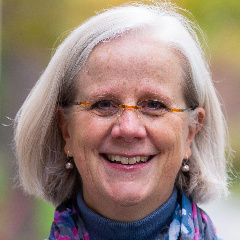Browse all past issues of VPAL's Into Practice Blog
Search All Issues
Topics
- active learning (18)
- research assignments (6)
- libraries (1)
- literature-based learning (2)
- multimedia (5)
- museums (6)
- object learning (7)
- online learning (5)
- peer instruction (10)
- storytelling (2)
- learning management system (2)
- syllabus design (3)
- teaching empathy (3)
- teaching fellows (1)
- lecture (3)
- learning goals (8)
- assessment (6)
- data (3)
- backward design (3)
- blended approaches (12)
- case-based learning (8)
- classroom contracts (7)
- classrooms and space (3)
- collaborative learning (27)
- community events (1)
- course transformation (7)
- devices (3)
- learning by making (5)
- discussion (24)
- engaged scholarship (4)
- experiential learning (16)
- feedback (18)
- group work (8)
- guest speakers (7)
- interdisciplinary (6)
- leadership (3)
Subscribe
Copyright © 2024 The President and Fellows of Harvard College | Privacy | Accessibility | Digital Accessibility | Report Copyright Infringement

 Gavin Porter, Lecturer in Immunology (HMS), helps students develop critical skills for research paper analysis. Prior to 2019, his students would individually read papers and submit their analysis through a traditional templated question approach. Due to the repetitive nature of the assessment product and after realizing that all students could benefit from each other’s questions and ideas, Dr. Porter transitioned this assignment to a collaborative one using a social annotation platform created at Harvard called
Gavin Porter, Lecturer in Immunology (HMS), helps students develop critical skills for research paper analysis. Prior to 2019, his students would individually read papers and submit their analysis through a traditional templated question approach. Due to the repetitive nature of the assessment product and after realizing that all students could benefit from each other’s questions and ideas, Dr. Porter transitioned this assignment to a collaborative one using a social annotation platform created at Harvard called  The debate over assessments—their frequency, structure, and value—has become more vibrant in recent years, first with the onset of COVID-19 and now with the advent of Generative AI. As instructors experiment with different approaches, the Math Department has increased its emphasis on assessments, yielding some early successes.
The debate over assessments—their frequency, structure, and value—has become more vibrant in recent years, first with the onset of COVID-19 and now with the advent of Generative AI. As instructors experiment with different approaches, the Math Department has increased its emphasis on assessments, yielding some early successes.
 Sharad Goel, Professor of Public Policy (HKS), teaches statistical methods in his application-oriented course,
Sharad Goel, Professor of Public Policy (HKS), teaches statistical methods in his application-oriented course,  Allison Pingree, Associate Director of Instructional Support and Development for the Harvard Graduate School of Education's Teaching and Learning Lab, partners with faculty to enhance teaching and learning across contexts. With over 25 years of experience as a faculty and educational developer, she works with individual instructors and teaching teams to build effective and inclusive learning communities, consults on course design, and leads professional learning programs on a multitude of topics and themes. Pingree is guided by her commitment to “deep listening, skilled facilitation, and reflective practice” as she coaches faculty and develops new programming to foster pedagogical innovation and best practices. At this stage in the semester, she urges faculty to consider gathering student feedback on their courses and implementing changes to respond to student concerns.
Allison Pingree, Associate Director of Instructional Support and Development for the Harvard Graduate School of Education's Teaching and Learning Lab, partners with faculty to enhance teaching and learning across contexts. With over 25 years of experience as a faculty and educational developer, she works with individual instructors and teaching teams to build effective and inclusive learning communities, consults on course design, and leads professional learning programs on a multitude of topics and themes. Pingree is guided by her commitment to “deep listening, skilled facilitation, and reflective practice” as she coaches faculty and develops new programming to foster pedagogical innovation and best practices. At this stage in the semester, she urges faculty to consider gathering student feedback on their courses and implementing changes to respond to student concerns.